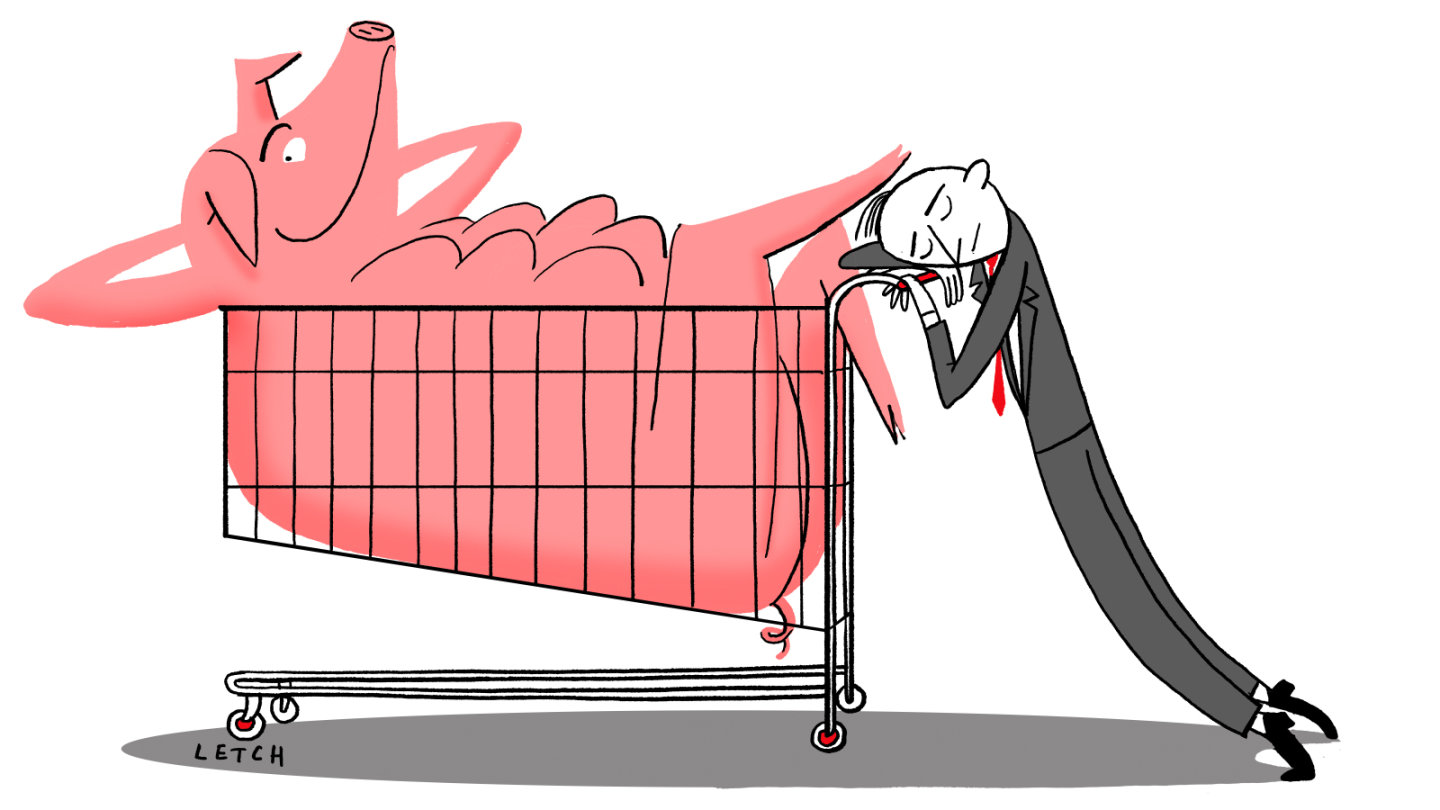Your lender is relying on you feeling it’s too hard to move your mortgage. When you’re looking at more cost-effective options, look beyond the often-suggested packages to a more basic loan.
A borrower with a $1 million loan package can reduce monthly principal and interest home repayments by nearly $370 a month, saving more than $130,000 in interest over the life of a typical 30-year mortgage.

Even bigger savings are on offer to property investors and for borrowers who choose a no-frills mortgage, rather than a package that includes features ranging from credit cards to offset accounts.
But many borrowers shopping around for lower rates, more features and improved service are discovering that divorcing their existing lender can take a lot of time, money and hassle.
Gareth Handy and his wife Stephanie decided to replace ME Bank with ANZ as their loan provider when they moved from their apartment in St Kilda, about seven kilometres from Melbourne’s central business district, to a house in a nearby suburb. The birth of a son, Oliver, and expectation of more children triggered the move.
Handy’s decision to change lenders was partly motivated by finding a lower rate but more a reaction to problems with client service at ME Bank, particularly online banking.
“Banks get you on board and then do not do a great deal to retain you,” says Handy about his experience with ME Bank.
Handy’s experience is symptomatic of a problem seized upon by politicians and regulators who claim major banks are pocketing about $3 billion a year by charging higher rates to their existing customers than their new clients.
“Over the past few years lenders have been competing for new business by offering sharp interest rates,” says Steve Mickenbecker, group executive for Canstar, which compares fees and rates.
“They’ve been able to do this by holding rates for existing borrowers steady, which has left this group paying higher interest rates compared to new borrowers.”
Lenders recently came under fire for “profiteering” by not passing on the whole 25 basis point cut announced earlier this month by the Reserve Bank of Australia.
Handy, a manager in the automotive industry, was chasing a lower rate for his new home loan of $930,000 and $570,000 investment apartment but is more interested in improved service, particularly online banking.

“It’s not just falling rates – for me, ME’s service was not great. We were always having to jump through hoops to get anything done. It put us off,” he says.
“I was bitter about ME from the start. The service was slow, the online applications took an eternity to load and were not efficiently delivered.”
For example, he received a fine after the bank incorrectly calculated the monthly payment on the combined mortgages was 2¢ short.
But the planned move to ANZ highlights the time, expense and bureaucracy that can entangle even a comparatively simple process.
Handy has so far incurred expenses of a $350 discharge fee to ME Bank, $240 in state registry taxes and $395 in fees for the ANZ loan package.
The transfer, which was meant to be settled on Monday, has been put back a fortnight because one of the letters from his middle name was missing on the loan documents. That is likely to cost another $92 in lost interest payments. “It is completely unacceptable,” he says.
ME’s chief experience efficer Ingrid Purcell replies: “We’re always sorry to hear a customer is leaving. However, ME continues to invest in its digital experiences and overall customer satisfaction is very high, with recent Roy Morgan data showing ME in the top four for non-home-loan customers and top five for home loan customers. Historically, ME has a net gain in refinancers, particularly from the big four, as more customers realise they can get a better deal from mid-tier banks and a better customer experience.”
Cate Bakos, president of the Real Estate Buyers Agents Association of Australia, says borrowers can encourage existing lenders to “sharpen their pencil” and offer a more competitive rate.
“It’s like buying something from Bunnings Warehouse,” says Bakos about the retailer that promises to better any price offered by a competitor. “They want to keep your business and will often come back with a matching, or better, offer.”
For borrowers like the Handys, who want to change lender for a range of reasons, there is the option of a loan package or a stand-alone loan.
The accompanying tables highlights the differences in rates charged to existing and new customers for loan packages from seven lenders. It assumes the existing customers started their loans three years ago.
CBA, ANZ and NAB have not offered bigger discounts to new borrowers for these products, but there may be discrepancies in rates for new borrowers across their other home loans.
Others, such as Suncorp Bank, have sliced nearly 180 basis points off the package rate for new borrowers compared to 115 basis points paid by existing borrowers. The saving for new borrowers is almost $400 a month.
The discounts are even bigger for the investment loans, with HSBC offering a 200 basis point discount (compared with 80 basis points for existing borrowers), meaning a saving of almost $700 a month or nearly $251,000 over the life of the loan.
There are also savings for borrowers ready to forfeit some of the features by opting for a “basic package”, which is also shown in another table.
Buyers ready to shop around non-banks, mutuals and co-ops are likely to find even cheaper rates, particularly special offers targeting first-time buyers, or those planning to switch.
Chris Foster-Ramsay, a mortgage broker, says many smaller lenders make market-beating one-off special offers but are reluctant to renegotiate in later years when rates begin to creep up.
Big lenders are more likely to offer their package loan borrowers a better deal, he adds.
Borrowers considering a new loan face tougher credit scrutiny after the introduction of comprehensive credit reporting on October 1 that enables lenders to access more information from credit rating agencies.
Those with good overall credit could get a lower rate but others can be charged a premium or find it more difficult to obtain credit.
Mortgage brokers recommend those applying for a loan to regularly review their credit report, pay bills on time, pay the credit card off in full each month and consider consolidating debt.
They also recommend setting up a file that contains 12 months’ bank statements and three to six months’ payslips.
Finder, which monitors market rates and fees, warns against applying for loans with a variety of lenders. “Each time you apply for credit, an inquiry is made on your credit file. Too many inquiries can have a negative impact on your credit,” it says.




